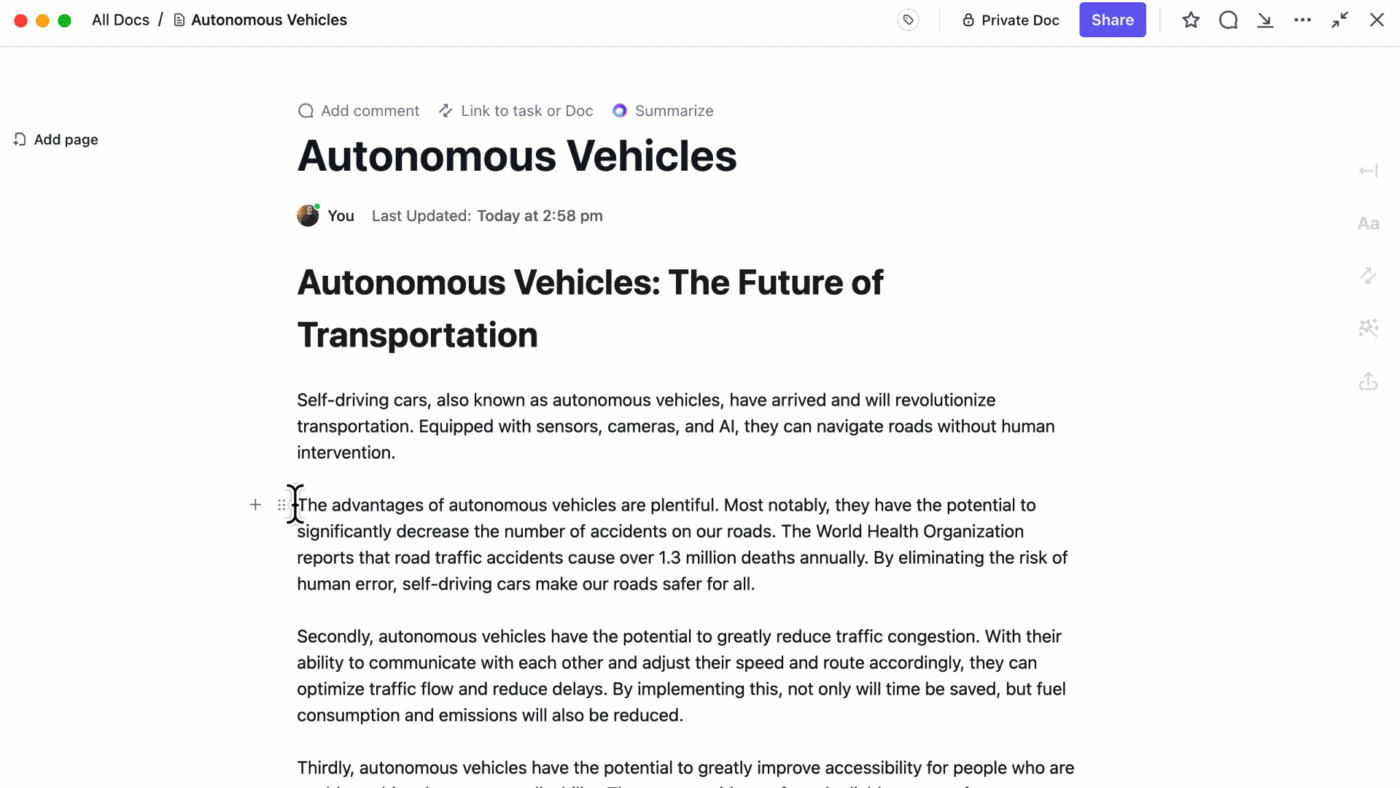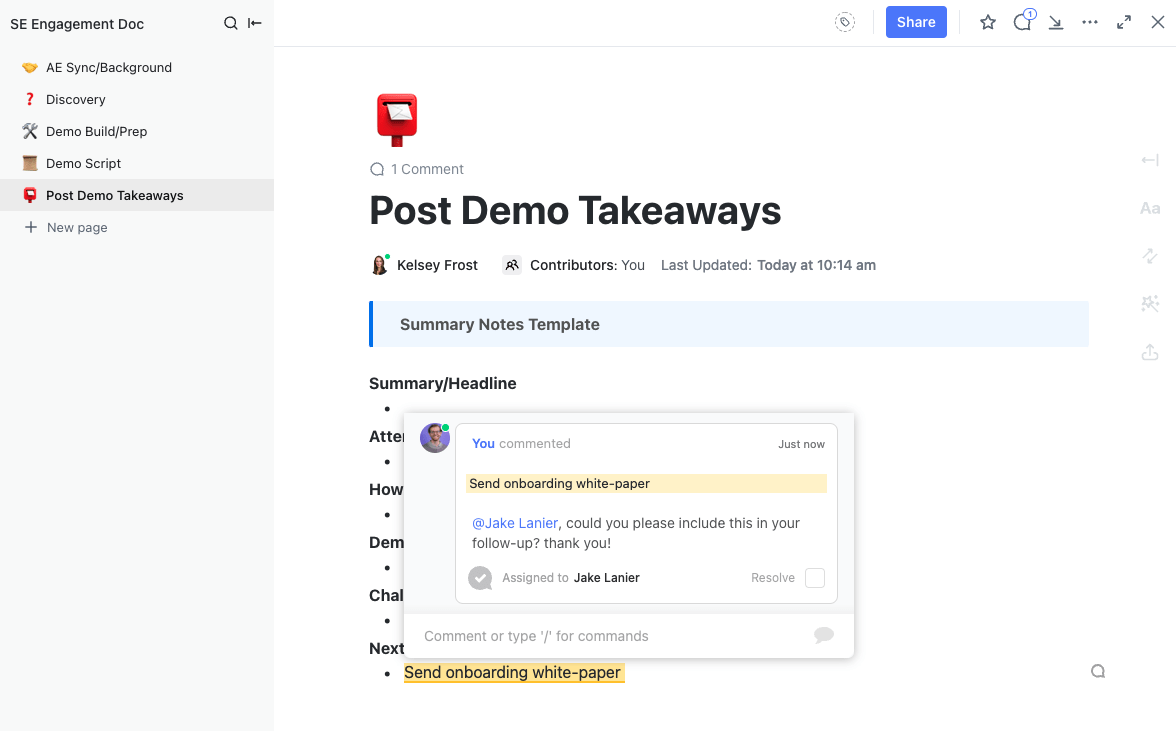How to Write a Service Agreement: Protect Your Business and Win Client Trust (+ Free Templates)

Sorry, there were no results found for “”
Sorry, there were no results found for “”
Sorry, there were no results found for “”

Have you ever provided services or taken on work without a formal contract? Then you know the risks—late payments, scope creep, misunderstandings, or worse, canceled work with no way to recover. Frustrating, right?
That’s where a solid service agreement comes in.
A well-crafted contract outlines expectations, clarifies responsibilities, and shields your business from potential disputes.
But how do you create an agreement that works for you and your client? One that’s legally enforceable, professional, and keeps everything running smoothly?
This guide will show you how to write a service agreement that protects your work and builds a successful business relationship.
Ready to lock in your terms and avoid future headaches? Let’s begin!
A service agreement is a legally binding contract that establishes the details of a working relationship between a service provider and a client. It aligns both sides on deliverables, timelines, and expectations, reducing the risk of misunderstandings.
Writing a service agreement from scratch can feel overwhelming and time-consuming. Try ClickUp’s free Service Agreement Template to simplify the process and cover all the essentials—without the legal guesswork.
Let’s break down the core components of a service contract and the value they bring:
You might think that a handshake or a verbal agreement suffices because you and your client trust each other.
While that old-school approach might work for some, a written service agreement is essential in today’s business landscape. Here’s why:
🧠 Remember: Murphy’s Law is always at play in the service industry— ‘anything that can go wrong, will go wrong.’ So, don’t leave your business exposed. A ‘force majeure’ clause shields you from uncontrollable events, ensuring you’re ready for anything. Here’s how:
Anyone offering services—solo or part of a business—must create a service agreement. It’s your shield against confusion, delays, and unpaid work. Here’s who benefits the most:

Unless you’re a lawyer, drafting a service agreement can be challenging. There’s feedback to incorporate, legalese to decipher, and operations to manage. You need a tool that simplifies the process and keeps everything running smoothly.
ClickUp is the all-in-one productivity platform that makes creating agreements effortless.
No more endless email threads or messy revisions—just smooth collaboration.
Here’s how to write a professional, airtight service agreement using ClickUp:

Defining who’s involved is the first step in creating a solid service contract. Getting this critical step right sets the foundation for the entire agreement. So, include these essential components:
Using ClickUp Docs to draft your contract lets you collaborate with your client and sales team in real-time. Tag team members to verify details or update information, ensuring everything is accurate.

The scope of services provided outlines what’s included in the project and what’s not. Cover the following points:
ClickUp Docs enables you to create live, dynamic legal documents for service agreements. Its rich text formatting options—such as headings, bullet points, embedded links and images, and tables—offer the clarity and structure often missing in traditional platforms.
💡Pro Tip: Need help defining your deliverables? Let ClickUp’s statement of work templates guide you in creating a detailed scope that covers all bases.

What is the payment method and structure? When are payments due (start and end date)? Are there any conditions for payment? Make sure to leave no room for misinterpretation here. To do so,
💡Pro Tip: Schedule reminders of upcoming payment deadlines using ClickUp Automations so you never have to chase clients. Notifications keep you on top of payments without manual tracking.
Defining each party’s responsibilities upfront prevents delays and confusion, keeping the project on track.
As the service provider, detail all contractual obligations you will fulfill, such as delivering reports, meeting deadlines, etc. Similarly, the client must provide timely feedback, access to essential systems and data, and so on.

💡Pro Tip: With ClickUp Tasks, turn specific responsibilities into actionable tasks. Here’s how:

Now it’s time to safeguard your agreement with the provisions that cover every scenario. Whether you’re dealing with a potential project delay, early termination, or legal dispute, adding these clauses protects you and your client.
The AI Writer by ClickUp Brain pulls together these critical clauses and compiles a complete contract within seconds. If you need to reference a previous contract, use ClickUp Brain’s Knowledge Manager to search your legal document history for quick inputs.
Need to collaborate across geographies? ClickUp’s translation capabilities help localize your agreements effortlessly for your global partners.

Once you complete your draft, review the entire agreement to ensure it covers everything and that all parties are satisfied.
Need a quick conversation with a colleague to finalize details? Start a chat from within the task with ClickUp Chat and sort it out in real-time.
After the review, it’s time to finalize and sign.
While we’ve covered the essential elements of a service agreement, some industries might need additional provisions:
Ideal use case: Construction, event planning, healthcare.
Purpose: Shifts responsibility for specific risks to the other party.
For example, a hospital contracting a cleaning service could include this clause, making the service liable for any accidents caused by their staff. Event planners might use it to protect themselves if something goes wrong with the venue during an event.
Ideal use case: IT services, consulting services, real estate.
Purpose: Ensures one party covers losses caused by third-party claims.
For example, an independent contractor might include an indemnification clause in a consulting agreement to protect against additional costs if the client’s actions lead to third-party claims. In real estate, this clause could require tenants to cover legal expenses if their actions violate property laws.
Ideal use case: Graphic design, photography, advertising, software development
Purpose: Defines who owns the rights to the final product. Confidential information clauses may protect proprietary design processes or sensitive information, while exclusive property rights prevent clients from reusing or reselling the work without permission.
For example, a graphic designer could retain ownership of the design while granting the client a license to use it for a limited time. Software developers may retain ownership of the code but allow clients limited usage rights.
Ideal use case: Consulting, web development, marketing, legal services
Purpose: Ensures the client provides the necessary information or resources to help the project progress.
For example, a legal firm should include a clause requiring clients to submit case-related documents within a specified timeframe to avoid delays. Marketing contracts consist of the timely delivery of brand assets, including logos and style guides.
Ideal use case: All industries
Purpose: Standard, widely accepted clauses that ensure the contract is legally binding. Commonly reused across service agreement templates, they cover essential legal terms and minimize disputes.
For example, a ‘severability clause’ keeps the contract valid even if one part is unenforceable. An ‘amendment clause’ states that any changes to the agreement must be in writing and signed by both parties, ensuring transparency and accountability.
Crafting a suitable service agreement is essential for productive business relationships. However, not all agreements are the same—each partnership needs a tailored approach.
Below are industry-specific service agreement template examples to meet your business model’s unique needs.

Roles, responsibilities, and ownership rights must be clear when multiple parties come together for creative, technical, or collaborative projects.
A partnership service agreement template offers the perfect solution to:
Customize it to meet the specific needs of your partnership.

As a consultant, your expertise is your service, and a well-structured agreement protects you from miscommunication and potential disputes.
Using a consulting service agreement template saves time and ensures consistency across clients. It enables you to:

These service agreements are essential for businesses or freelancers that provide ongoing support, ensuring a steady flow of work and payments.
Instead of starting a new contract for every task, a retainer service agreement template helps you lock in a long-term commitment with your client. Here’s how:
Preparing a service agreement is crucial, but it’s only effective if your clients understand it and agree to sign it. Follow these best practices to ensure your service contracts are adopted, respected, and implemented smoothly:
Introduce your service level agreements during the client onboarding process. Set the tone by explaining why the contract is essential—it aligns expectations and protects both parties. When you make this a standard part of your workflow, clients will see it as a natural part of doing business with you.
Avoid assuming your clients understand the legal terms, especially payment, deliverables, and dispute resolution. Walk them through these critical areas to ensure clarity. This proactive step builds trust and reassures clients that you’re transparent about expectations.
Prebuilt service agreement templates give you a head start by offering a structured foundation you can easily customize based on your needs.
For instance, the ClickUp Services Agreement Template is your go-to for a quick and professional contract. This fully customizable agreement template allows you to draft a binding, tailored agreement in minutes—ideal for smooth, secure collaborations.
Here’s why you’ll love it:
Digital signing tools speed up the process of signing agreements. These tools create an official, trackable record and eliminate the hassle of printing, signing, and scanning contracts. The result? Faster approvals and smoother onboarding.
Your business or legal requirements evolve, and so should your contracts. Schedule periodic reviews (every year or six months) to ensure your agreements reflect your current services and stay compliant with governing law.
Managing service contracts doesn’t have to be a hassle. Platforms like ClickUp allow you to draft, collaborate, and store service agreements in one place. Track approvals, organize signed documents, and set reminders for renewals or updates—all without leaving the platform.
Let’s address a few common hurdles faced while drafting service agreements and ways to overcome them.
🔒Challenge: Using the same service agreement contract for every client ignores the unique details of each project and can lead to misalignment.
🔑Solution: Customize. Start with solid business agreement templates that fit the specifics of the project and the client. It shows professionalism and ensures that every detail meets the client’s expectations.
For example, if you’re working on a website redesign, include details like the number of design revisions, launch date, and post-launch support. But for a simple logo design, you might focus on a single round of revisions with a shorter deadline.
If you’re handling long-term projects that demand precision and clarity, the ClickUp Master Services Agreement Template is your best bet. It’s perfect for customizing contracts for ongoing services where trust and consistency are essential.
Here’s why you’ll love it:
🔒Challenge: Heavy legal jargon can confuse clients and make them hesitant to sign.
🔑Solution: Use clear, straightforward language. When legal terms are necessary, like an ‘indemnification clause,’ ‘Force Majeure,’ or ‘liability,’ add a quick explanation in simple English.
For example, instead of writing, ‘The service provider shall indemnify the client against all claims,’ say, ‘The service provider isn’t responsible for damages unless caused by negligence.’ It keeps things professional and easy to understand.
🔒Challenge: Some clients might need more motivation to sign formal agreements, seeing them as complicated or unnecessary.
🔑Solution: Reassure them. Explain how the agreement benefits both sides by clarifying expectations and avoiding future confusion. Be open to reasonable negotiations while still protecting your interests.
For example, if a client is uneasy about payment terms, offer flexibility. You could offer to collect a smaller deposit (30% upfront), with the rest due at crucial milestones. This gives the client peace of mind while ensuring you get compensated fairly as work progresses.
🔒Challenge: Keeping track of different agreement versions for various clients becomes chaotic, leading to miscommunication and errors.
🔑Solution: Organize your contracts digitally. This helps you quickly locate and manage the most up-to-date version. ClickUp Docs comes with version control for peace of mind in this regard.
For example, organize contracts in folders labeled ‘Client A—Agreement v2’ or ‘Client B—Final Contract’ to stay on top of each project.
💡Pro Tip: ClickUp’s Connected Search can locate contracts within ClickUp and connected apps like Google Drive!
🔒Challenge: Laws, especially those related to data privacy and intellectual property, change frequently. Your contracts can quickly become outdated or non-compliant.
🔑Solution: Stay informed about the legal landscape relevant to your industry. Have a legal professional review them annually to ensure compliance with current regulations.
For example, if you’re a software service provider, avoid generic clauses like ‘we will protect your data.’ Update them to reflect specific legal obligations and applicable laws. For instance, reference CCPA and GDPR compliance for clients in the US and Europe, respectively.
A well-drafted service agreement isn’t just a legal safeguard—it’s the foundation of strong, lasting business relationships. It demonstrates professionalism, builds trust, and protects you from potential conflicts down the road.
Now you know how to write a contract for services. But why stop at good when you can make it great? ClickUp empowers you to create comprehensive service agreements quickly and efficiently.
Harness the power of ClickUp Docs for seamless collaboration, tap into service agreement templates for a head start, and leverage ClickUp Brain for effortless clause management. Ready to optimize your documentation process? Try ClickUp today and set yourself up for success.
© 2026 ClickUp